Trading with the world
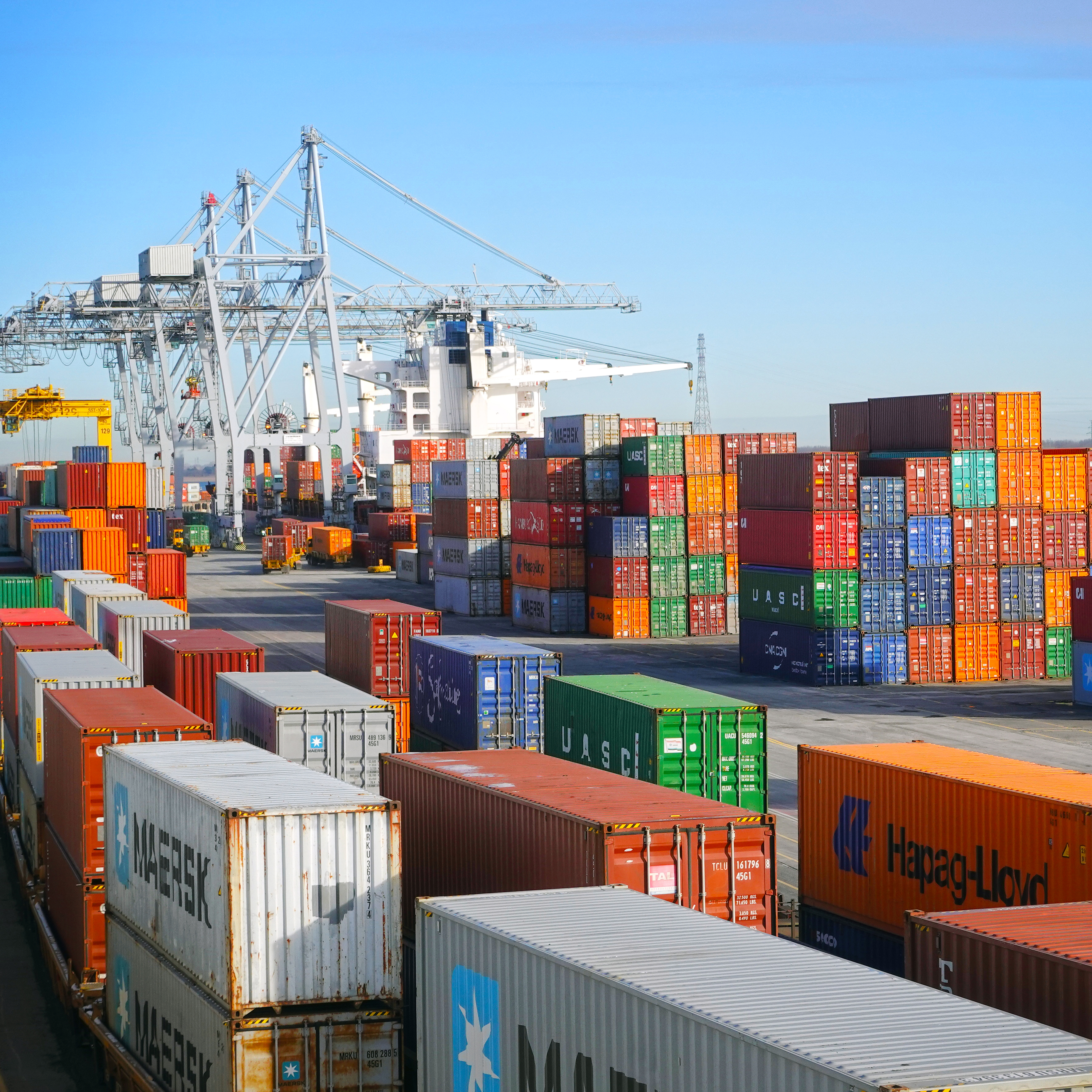
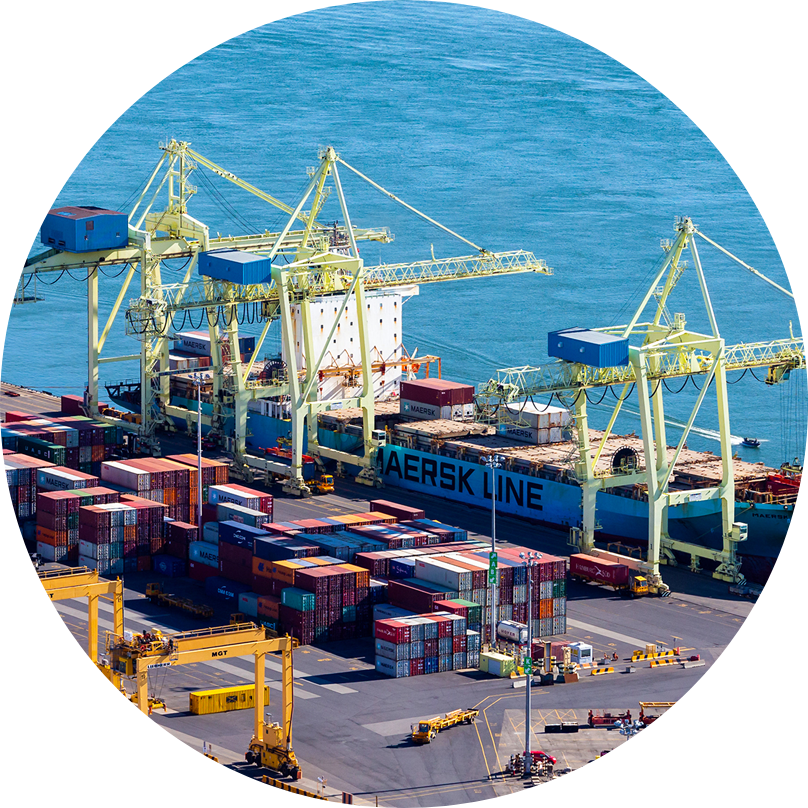
On our docks
Bonaventure Expressway and Cité du Havre to the borough of Rivière-des-Prairies-Pointe-aux-Trembles, bordering the boroughs of Ville-Marie and Mercier-Hochelaga-Maisonneuve, as well as Montreal East. It also has four km of shoreline in Contrecœur.
It has five container terminals (four for international traffic and one for domestic traffic), two cruise terminals, 12 berths for dry bulk and six liquid bulk terminals, along with a grain terminal and a grain containerization terminal.
As North America’s only destination port, the Port of Montreal provides the fastest route between Europe, the Mediterranean and the industrial heartland of North America, allowing ships to be fully unloaded and reloaded before leaving for their next destination.
This means that the Port of Montreal has a steady balance of trade between imports and exports:
- 52% of volumes transported by ship are imports and 48% are exports
- 51% of volumes transported by train are imports and 49% are exports
Internationally, Northern Europe remains the Port of Montreal’s main trading partner with 27% of traffic, followed by the United States (15%), Asia (14%), the Mediterranean (13%), Latin America (8%), the Middle East (5%) and Africa (3%).
At the core of a multimodal platform recognized for its performance, the Port of Montreal has 100 km of rail lines connected to the CN and CP networks and the highway system, making it possible to reach a pool of 110 million consumers in Quebec, Ontario and as far away as the U.S. Midwest.
In 2022, the Port of Montreal welcomed a total of 2,156 vessels.
As for trucking, the terminals were used by 475,022 trucks, a daily average of 1,827 trucks.
A total of 2,981 trains ran on the CN and CP networks to and from Port facilities.
The modal split was 39% by rail and 61% by truck.The Port of Montreal conducts a comprehensive performance monitoring program for vessel, terminal, rail and truck operations. Weekly performance reports provide truck processing times on our docks and dwell times for rail containers.
The average total truck processing time (from port entry to terminal exit) was 46 minutes in 2022, about 10% faster than in 2017 (51 minutes).
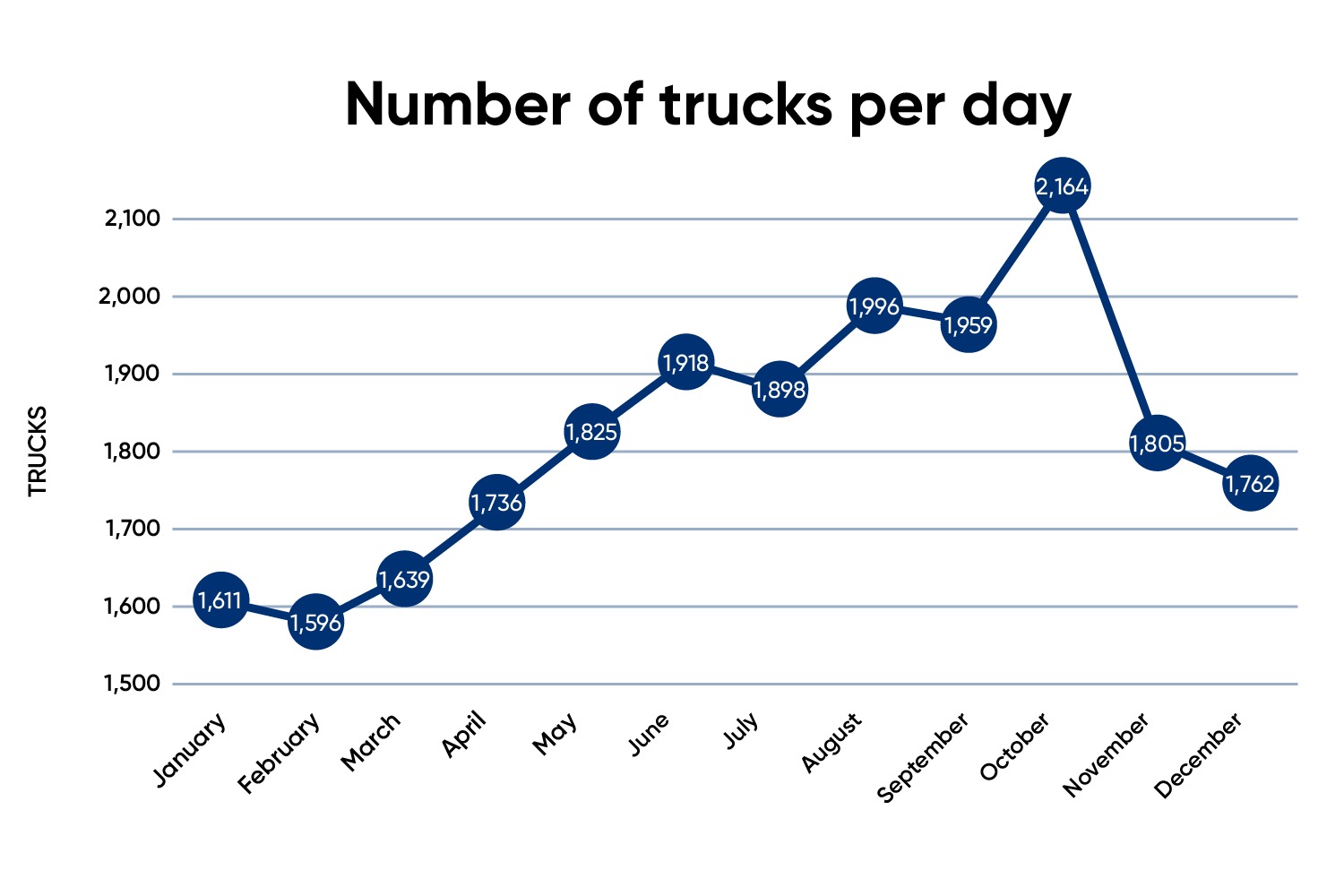 The average dwell time for import containers bound for rail was 7.6 days, exceeding the optimal threshold of two days. Of note, the proportion of rail containers staying less than 60 hours in the territory was 32% in 2022, down 10% from 2021. This decrease is due to two factors:
The average dwell time for import containers bound for rail was 7.6 days, exceeding the optimal threshold of two days. Of note, the proportion of rail containers staying less than 60 hours in the territory was 32% in 2022, down 10% from 2021. This decrease is due to two factors:
- Port congestion in Europe and the Mediterranean, leading to delays in vessel arrivals and causing more arrivals on weekends
- Significant congestion at the Brampton (Toronto area) rail yard, the hub of the national intermodal network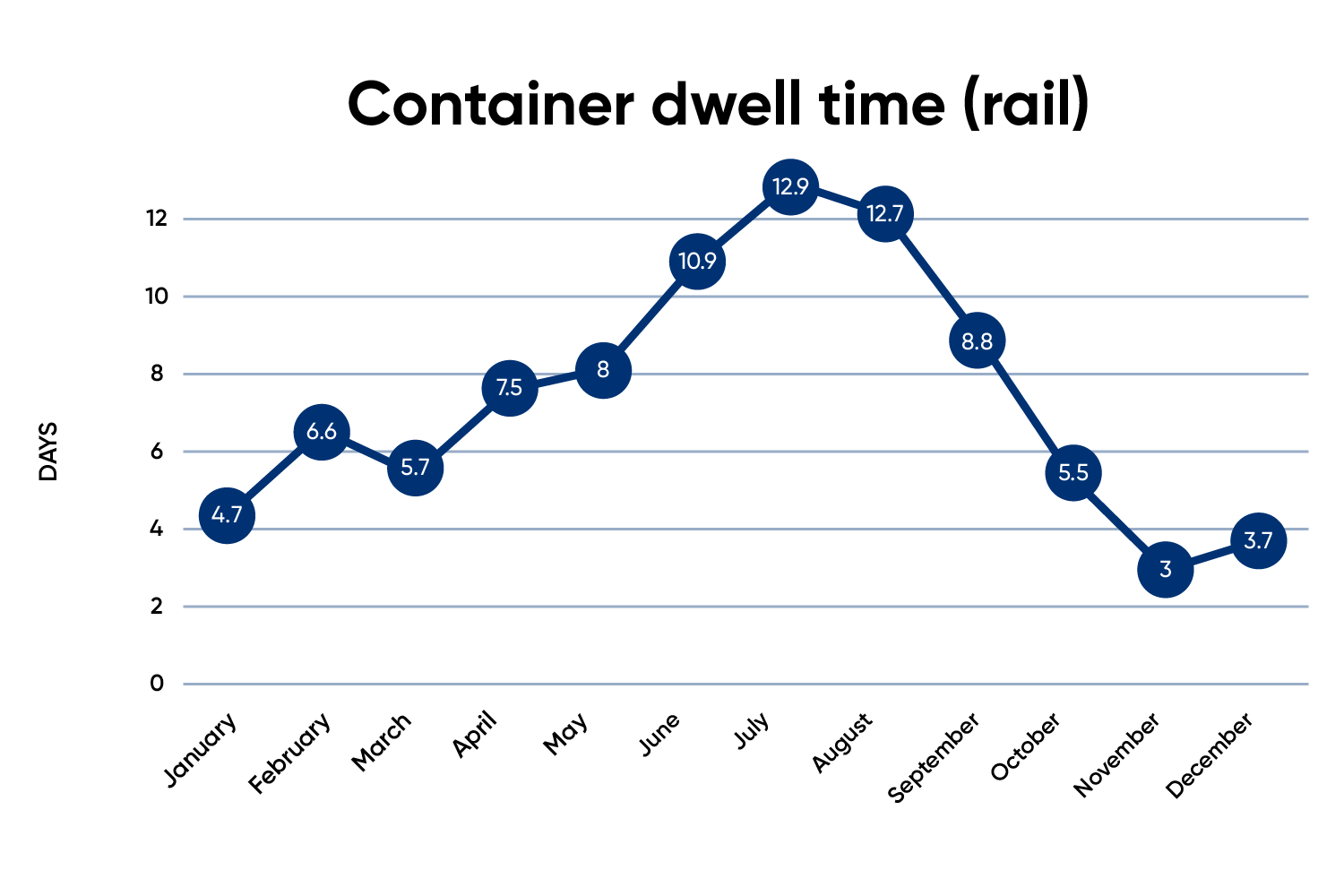
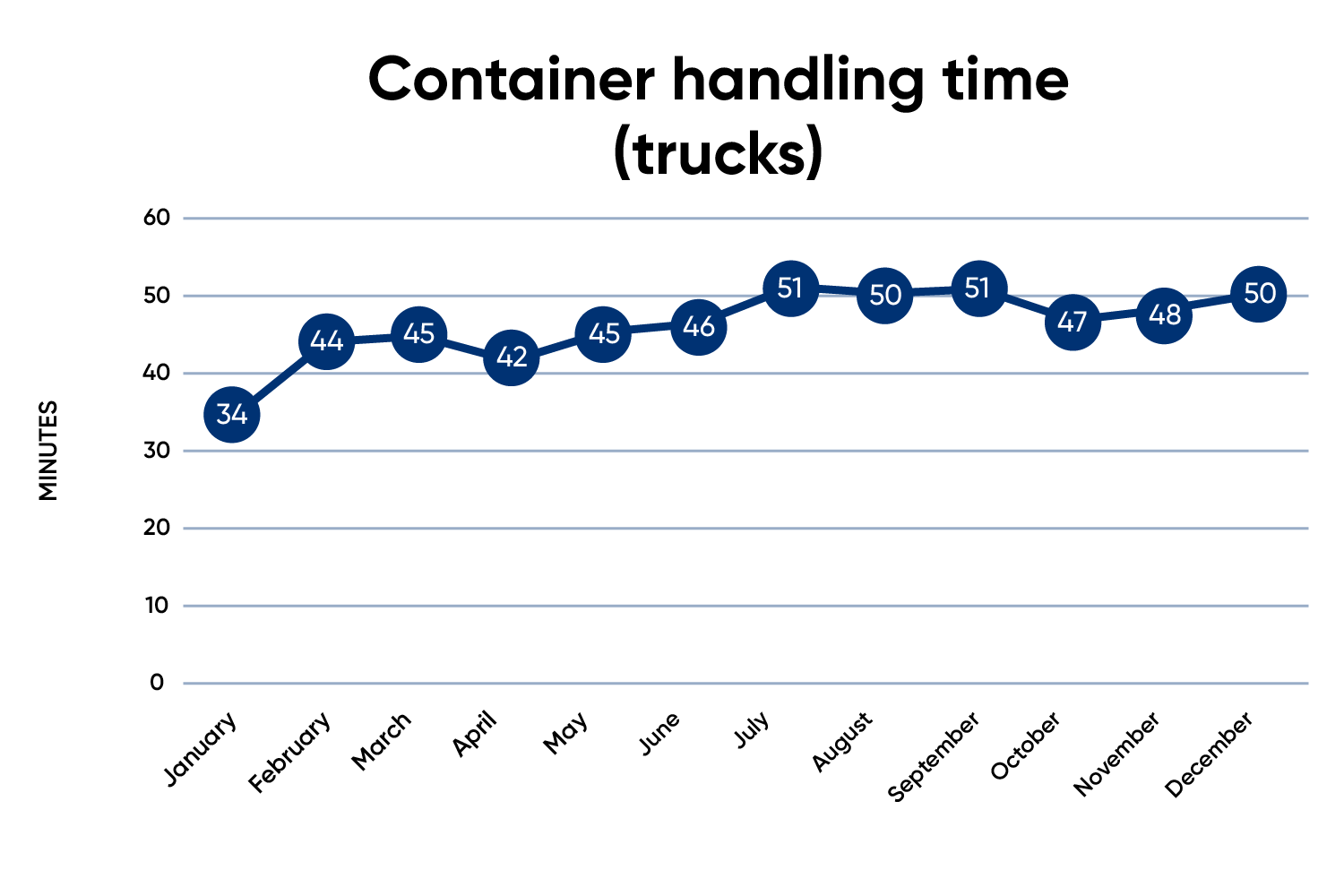
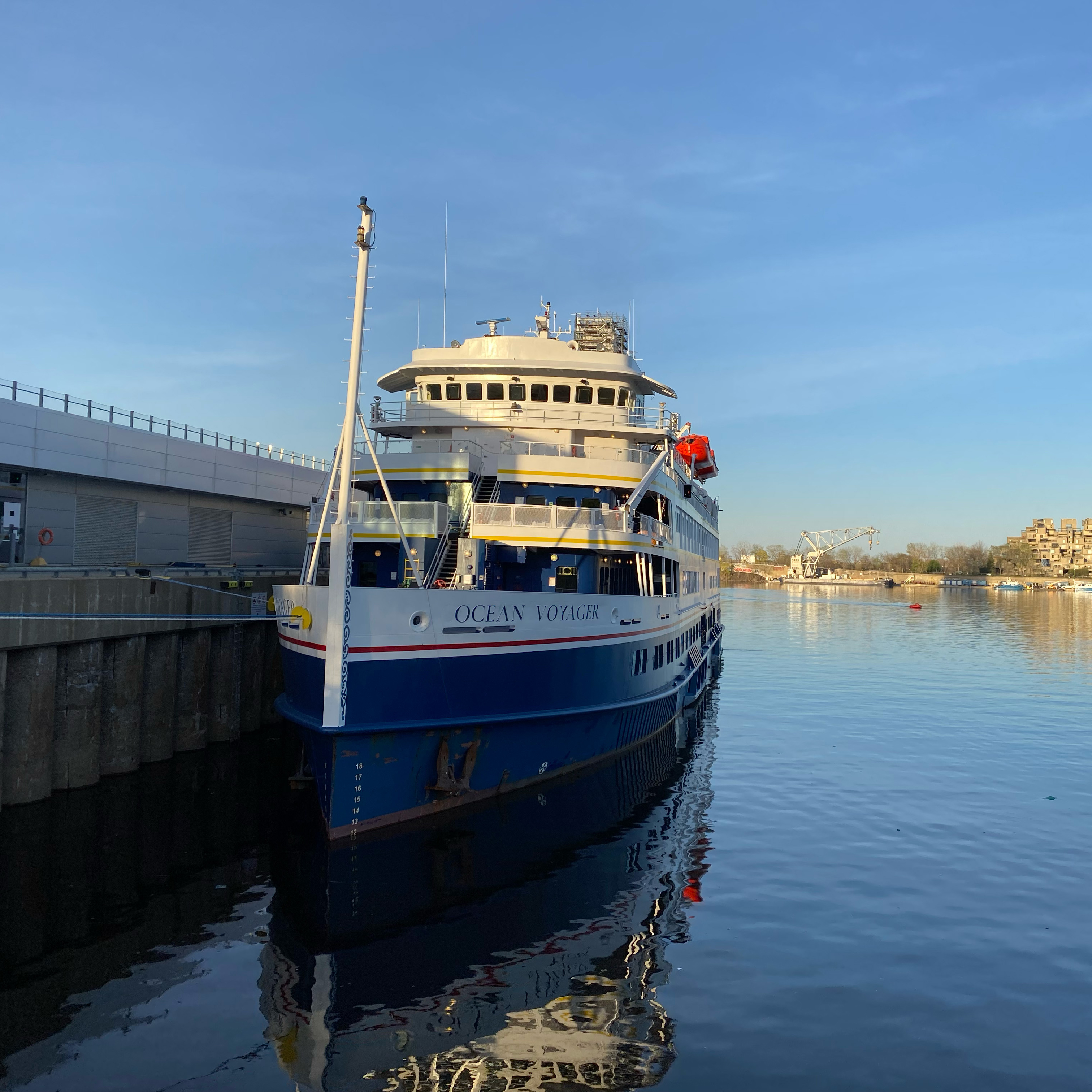
Partnerships
As part of its partnership agreement with the Port of Antwerp, initially signed in 2013 and renewed in 2019 for a period of 10 years, the Port of Montreal welcomed a delegation from the Port of Antwerp. To further consolidate relations between the two ports and share best practices, discussions and exchanges focused on three priority areas of the partnership linking the two port authorities:
- Innovation, at a time when sharing data and logistics information is a tool of choice to improve fluidity and performance
- The energy transition, specifically developing a green corridor to provide eco-responsible solutions from one end of the supply chain to the other, including port infrastructure and bunkering solutions to accommodate new generations of vessels
- The cold chain, in a context marked by strong growth in the refrigerated container sector, making it possible to transport fruits and vegetables as well as wine, make-up and pharmaceutical products at controlled temperatures.On a national scale, the Port of Montreal continued its work with Scale AI, Canada’s global innovation cluster in artificial intelligence. Among the projects underway, the Port of Montreal is finalizing the development of a dynamic tool for the rail sector to streamline the supply chain. The purpose of this tool is to share real-time data on vessels in transit to the Port, so that the various players in the rail logistics chain can synchronize their actions and accelerate the delivery of containerized goods.
The CargO2ai logistics tool, which uses artificial intelligence to identify priority containers, was used for a third consecutive year. A total of 9,100 containers (17,500 TEUs) were identified and processed through this system, with over 85% of the critical cargo destined for the Quebec and Ontario markets. These containers held mainly pharmaceutical and medical products, as well as medications.
Through its partnership with Centech, which is affiliated with École de technologie supérieure (ÉTS), initiated in 2018 to accelerate its innovation cycles by collaborating with technology startups, the Port of Montreal also developed a project to reduce fuel consumption related to rail operations on Port territory. The project consists of an application that can make real-time recommendations to the driver to optimize driving behaviour and reduce fuel consumption. The project could reduce the MPA’s greenhouse gas emissions by 7% and fuel consumption by 11% per year.
The 7th edition of the ÉTS Smart Port Challenge focused on modelling the flow of trucks accessing the Contrecœur container terminal. Scholarships were awarded to the winning teams by the MPA and Hatch.
The Port of Montreal is also a member of the international smart port group chainPORT.